 W
WA nuclear and radiation accident is defined by the International Atomic Energy Agency (IAEA) as "an event that has led to significant consequences to people, the environment or the facility. Examples include lethal effects to individuals, large radioactivity release to the environment, reactor core melt." The prime example of a "major nuclear accident" is one in which a reactor core is damaged and significant amounts of radioactive isotopes are released, such as in the Chernobyl disaster in 1986 and Fukushima Daiichi nuclear disaster in 2011.
 W
WThe International Nuclear and Radiological Event Scale (INES) was introduced in 1990 by the International Atomic Energy Agency (IAEA) in order to enable prompt communication of safety significant information in case of nuclear accidents.
 W
WThe Andreev Bay nuclear accident took place at Soviet naval base 569 in February 1982. Andreev Bay is a radioactive waste repository 55 km northwest of Murmansk and 60 km from the Norwegian border, on the western shore of the Zapadnaya Litsa. The repository entered service in 1961. In February 1982, a nuclear accident occurred in which radioactive water was released from a pool in building #5. Cleanup of the accident took place from 1983 to 1989. About 700,000 tonnes of highly radioactive water leaked into the Barents Sea during that time. About 1,000 people took part in the cleanup effort. Vladimir Konstantinovich Bulygin, who was in charge of the naval fleet's radiation accidents, received the Hero of the Soviet Union distinction for his work.
 W
WCastle Bravo was the first in a series of high-yield thermonuclear weapon design tests conducted by the United States at Bikini Atoll, Marshall Islands, as part of Operation Castle. Detonated on March 1, 1954, the device was the most powerful nuclear device detonated by the United States and its first lithium deuteride fueled thermonuclear weapon. Castle Bravo's yield was 15 megatons of TNT, 2.5 times the predicted 6.0 megatons, due to unforeseen additional reactions involving lithium-7, which led to the unexpected radioactive contamination of areas to the east of Bikini Atoll. At the time, it was the most powerful artificial explosion in history.
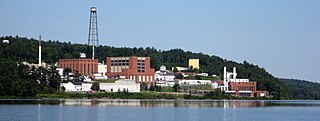 W
WChalk River Laboratories is a Canadian nuclear research facility in Deep River near Chalk River, about 180 km (110 mi) north-west of Ottawa.
 W
WCorium, also called fuel-containing material (FCM) or lava-like fuel-containing material (LFCM), is a material that is created in the core of a nuclear reactor during a meltdown accident. It resembles natural lava in its consistency.
 W
WDaigo Fukuryū Maru was a Japanese tuna fishing boat with a crew of 23 men which was contaminated by nuclear fallout from the United States Castle Bravo thermonuclear weapon test at Bikini Atoll on March 1, 1954.
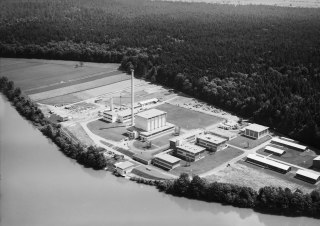 W
WDiorit was an experimental nuclear research reactor at the Swiss Federal Institute for Reactor Research (EIR) in Würenlingen
 W
WThe Elephant's Foot is the nickname given to a large mass of corium and other materials formed underneath the Chernobyl Nuclear Power Plant, near Pripyat, Ukraine, during the Chernobyl disaster of April 1986. Discovered in December that year, it is presently located in a maintenance corridor underneath the remains of Reactor No. 4. It remains an extremely radioactive object; however, its danger has decreased over time due to the decay of its radioactive components.
 W
WA fizzle occurs when the detonation of a device for creating a nuclear explosion grossly fails to meet its expected yield. The cause(s) for the failure can be linked to improper design, poor construction, or lack of expertise. All countries that have had a nuclear weapons testing program have experienced some fizzles. A fizzle can spread radioactive material throughout the surrounding area, involve a partial fission reaction of the fissile material, or both. For practical purposes, a fizzle can still have considerable explosive yield when compared to conventional weapons.
 W
WK-219 was a Project 667A Navaga-class ballistic missile submarine of the Soviet Navy. It carried 16 R-27U liquid-fuel missiles powered by UDMH with nitrogen tetroxide (NTO), and equipped with either 32 or 48 nuclear warheads. K-219 was involved in what has become one of the most controversial submarine incidents during the Cold War on Friday 3 October 1986. The 15-year-old vessel, which was on an otherwise routine Cold War nuclear deterrence patrol in the North Atlantic 1,090 kilometres (680 mi) northeast of Bermuda, suffered an explosion and fire in a missile tube. While underway submerged the seal in a missile hatch cover failed, allowing high-pressure seawater to enter the missile tube and owing to the pressure differential rupture the missile fuel tanks, allowing missile's liquid fuel to mix and ultimately combust. Though there was no official announcement, the Soviet Union claimed the leak was caused by a collision with the submarine USS Augusta. Although the Augusta was operating within the area, both the United States Navy and the commander of K-219, Captain Second Rank Igor Britanov, deny that a collision took place.
 W
WKosmos 954 was a reconnaissance satellite launched by the Soviet Union in 1977. A malfunction prevented safe separation of its onboard nuclear reactor; when the satellite reentered the Earth's atmosphere the following year, it scattered radioactive debris over northern Canada, some of the debris landing in the Great Slave Lake next to Fort Resolution, NWT.
 W
WThe Kyshtym disaster, sometimes referred to as the Mayak disaster or Ozyorsk disaster in newer sources, was a radioactive contamination accident that occurred on 29 September 1957 at Mayak, a plutonium production site for nuclear weapons and nuclear fuel reprocessing plant located in the closed city of Chelyabinsk-40 in Chelyabinsk Oblast, Russian SFSR, Soviet Union.
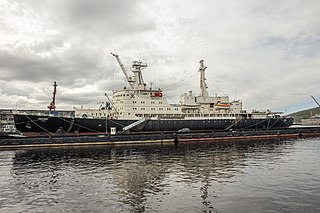 W
WLenin is a Soviet nuclear-powered icebreaker. Launched in 1957, it was both the world's first nuclear-powered surface ship and the first nuclear-powered civilian vessel. Lenin entered operation in 1959 and worked clearing sea routes for cargo ships along Russia's northern coast. From 1960 to 1965 the ship covered over 85,000 miles during the Arctic navigation season, of which almost 65,000 were through ice. Nuclear power proved to be an ideal technology for a vessel working in such a remote area as it removed the need for regular replenishment of fuel. On 10 April 1974 the vessel was awarded the Order of Lenin. It was officially decommissioned in 1989. It was subsequently converted to a museum ship and is now permanently based at Murmansk.
 W
WThe Lucens reactor was a 6 MW experimental nuclear power reactor built next to Lucens, Vaud, Switzerland. After its connection to the electrical grid on 29 January 1968, the reactor only operated for a few months before it suffered an accident on 21 January 1969. The cause was corrosion induced loss of heat dispersal leading to the destruction of a pressure tube which caused an adjacent pressure tube to fail, and partial meltdown of the core, resulting in radioactive contamination of the cavern.
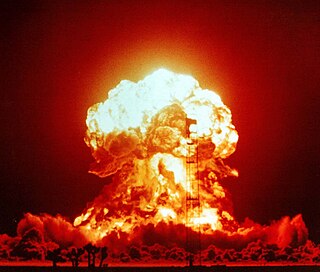 W
WA nuclear explosion is an explosion that occurs as a result of the rapid release of energy from a high-speed nuclear reaction. The driving reaction may be nuclear fission or nuclear fusion or a multi-stage cascading combination of the two, though to date all fusion-based weapons have used a fission device to initiate fusion, and a pure fusion weapon remains a hypothetical device.
 W
WNuclear labor issues exist within the international nuclear power industry and the nuclear weapons production sector worldwide, impacting upon the lives and health of laborers, itinerant workers and their families.
 W
WPrior to the 2011 Tōhoku earthquake and tsunami, Japan had generated 30% of its electrical power from nuclear reactors and planned to increase that share to 40%. Nuclear power energy was a national strategic priority in Japan. As of March 2020, of the 54 nuclear reactors in Japan, there were 42 operable reactors but only 9 reactors in 5 power plants were actually operating. A total of 24 reactors are scheduled for decommissioning or are in the process of being decommissioned.
 W
WThe Nyonoksa radiation accident, Arkhangelsk explosion or Nyonoksa explosion occurred on 8 August 2019 near Nyonoksa, a village under the administrative jurisdiction of Severodvinsk, Arkhangelsk Oblast, Russian Federation. Five military and civilian specialists were killed and three were injured.
 W
WLake Karachay, located in the southern Ural Mountains in eastern Russia, was a dumping ground for the Soviet Union's nuclear weapon facilities. It was also affected by a string of accidents and disasters causing the surrounding areas to be highly contaminated with radioactive waste. Although the lake has an area much smaller than that of the Fukushima Daiichi Nuclear Power Plant, and although three settlements, Ozyorsk, Novogornyj and Tatysh some 7 kilometers away are inhabited, and the lake is surrounded by Mayak, the lake is still technically a natural area. It has been described as the "most polluted spot on Earth" by the Worldwatch Institute.
 W
WPunggye-ri Nuclear Test Site was the only known nuclear test site of North Korea. Nuclear tests were conducted at the site in October 2006, May 2009, February 2013, January 2016, September 2016, and September 2017.
 W
WRadioactive contamination, also called radiological contamination, is the deposition of, or presence of radioactive substances on surfaces or within solids, liquids or gases, where their presence is unintended or undesirable.
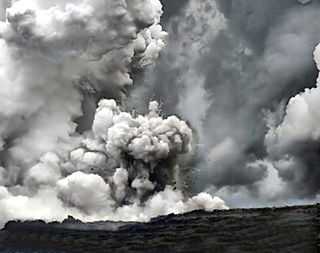 W
WA steam explosion is an explosion caused by violent boiling or flashing of water or ice into steam, occurring when water or ice is either superheated, rapidly heated by fine hot debris produced within it, or heated by the interaction of molten metals. Pressure vessels, such as pressurized water (nuclear) reactors, that operate above atmospheric pressure can also provide the conditions for a steam explosion. The water changes from a solid or liquid to a gas with extreme speed, increasing dramatically in volume. A steam explosion sprays steam and boiling-hot water and the hot medium that heated it in all directions, creating a danger of scalding and burning.
 W
WNine nuclear submarines have sunk, either by accident or scuttling. The Soviet Navy has lost five, the Russian Navy two, and the United States Navy (USN) two.
 W
WThe Techa is an eastward river on the eastern flank of the southern Ural Mountains noted for its nuclear contamination. It is 243 kilometres (151 mi) long, and its basin covers 7,600 square kilometres (2,900 sq mi). It begins by the once secret nuclear-processing town of Ozyorsk about 80 kilometres (50 mi) northwest of Chelyabinsk and flows east then northeast to the small town of Dalmatovo to flow into the mid-part of the Iset, a tributary of the Tobol. Its basin is close to and north of the Miass, longer than these rivers apart from the Tobol.
 W
WVandellòs I Nuclear Accident was a fire that caused an interruption of the cooling system in the Vandellòs Nuclear Power Plant, Catalonia (Spain) on 19 October 1989.
 W
WThe Vinča Institute of Nuclear Sciences is a nuclear physics research institution near Belgrade, Serbia. Since its founding, the institute has also conducted research in the fields in physics, chemistry and biology. The scholarly institute is part of the University of Belgrade.
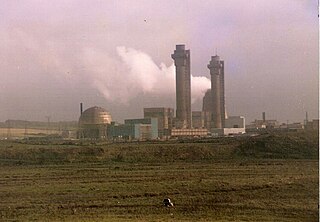 W
WThe Windscale fire of 10 October 1957 was the worst nuclear accident in the United Kingdom's history, and one of the worst in the world, ranked in severity at level 5 out of a possible 7 on the International Nuclear Event Scale. The fire took place in Unit 1 of the two-pile Windscale facility on the northwest coast of England in Cumberland. The two graphite-moderated reactors, referred to at the time as "piles", had been built as part of the British post-war atomic bomb project. Windscale Pile No. 1 was operational in October 1950 followed by Pile No. 2 in June 1951.